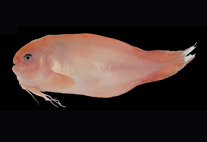Abstract
Phylogenetic relationships of Acridoidea were examined using mitochondrial cytochrome oxidase subunit sequences (COI, COII and COIII, total 2970bp). Fourteen grasshopper species of thirteen genera from seven families were sequenced to obtain mitochondrial genes data, along with twenty-two grasshopper species were obtained from the GenBank nucleotide database. The purpose of this study is to infer the phylogenetic relationships among families within Acridoidea and testing the monophyly of Acridoidea and each families of it. Phylogenic trees were reconstructed using Maximum Likelihood (ML) and Maximum Parsimony (MP) methods with Tettigonioidea and Gryllotalpoidea as outgroups. The putative initiation codon for COI is CCG in thirteen studied species and ATC in Bryodema luctuosum luctuosum. The 2970 bp concatenated sequences included 1431 conserved sites, 1539 variable sites, and 1216 parsimony-informative sites, the nucleotide compositions were significantly biased toward A and T (68.8%). The resulted phylogenetic trees supported the monophyly of Acridoidea, but did not entirely agree with the traditional morphology-based taxonomic system of grasshoppers within Acridoidea. The monophyly of three families of Acrididae, Catantopidae and Arcypteridae were not supported; Gomphoceridae and Arcypteridae were recovered together as a monophyletic group because of closer phylogenetic relationships; Pyrgomorphidae and Chrotogonidae have the same closer relationships; Pneumoridae, Pyrgomorphidae and Chrotogonidae were the most basal groups; while the taxonomic status of Pamphagidae, which was revealed as a monophyletic group, was not clear in this analysis. Moreover, the results indicate that a phylogeny inferred from the combination of several genes is more reliable than that from only a single gene sequence, and the third codon positions of protein coding genes can improve the topology and node supports of the phylogenetic trees.

